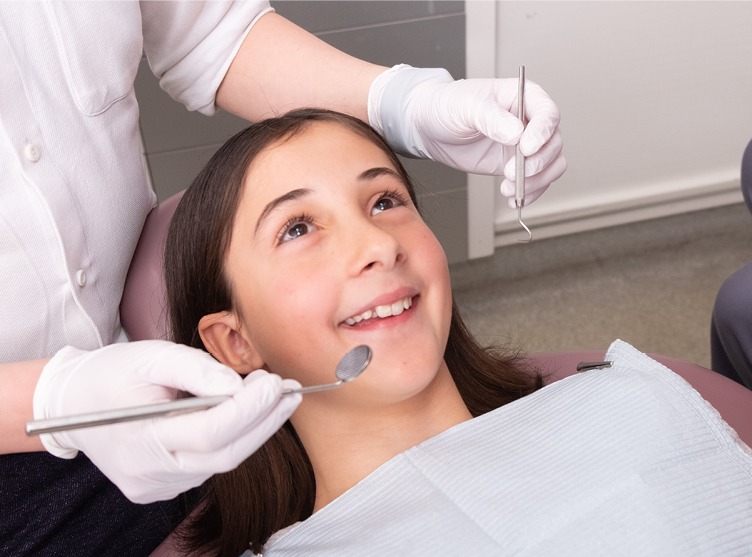Legacy Orthodontics Fundamentals Explained
An orthodontist is a dentist trained to diagnose, stop, and treat teeth and jaw abnormalities. They remedy existing problems and are trained to determine problems that may create in the future. Orthodontists collaborate with people of all ages, from children to adults. Individuals typically connect an ideal smile with health.
Malocclusion, or misaligned teeth, can bring about oral issues, including tooth decay, gum illness, and hard or agonizing chewing. Not everyone is birthed with straight teeth. If you have a bad bite or huge areas between your teeth, you may wish to speak with a dentist concentrating on orthodontic care.
What Does Legacy Orthodontics Mean?
( Photo Credit: DigitalVision/Getty Images) Orthodontists utilize dealt with and removable oral devices, like braces, retainers, and bands, to transform the position of teeth in your mouth. Orthodontic treatment is for oral abnormalities, including: Crooked teethBite troubles, like an overbite or an underbiteCrowded teeth or teeth that are too far apartJaw misalignmentThe objective of orthodontic therapy is to boost your bite.
A healthy and balanced bite ensures you can eat, eat, and talk appropriately. While you could consider orthodontists as mostly for children or teens that need braces, they can deal with dental problems at any type of age. Orthodontists participate in college, dental institution, and orthodontic college. After college graduation, they invest 2 or 3 years in an orthodontic residency program.
, yet not all dental professionals are orthodontists. They concentrate on 2 areas: How to appropriately and securely move teeth Exactly how to appropriately assist growth in the teeth, jaw, and faceOnce an orthodontist has completed training, they have the choice to become board certified.
Indicators on Legacy Orthodontics You Need To Know
Malocclusion leads to tooth congestion, an askew jaw, or irregular bite patterns. Malocclusion is normally treated with: Your orthodontist attaches steel, ceramic, or plastic square bonds to your teeth.
If you have only small malocclusion, you might be able to utilize clear dental braces, called aligners, rather than traditional dental braces (https://linktr.ee/brianmccune20176). Some people require a headwear to aid relocate teeth right into line with pressure from outside the mouth. After dental braces or aligners, you'll need to wear a retainer. A retainer is a personalized device that keeps your teeth in position.
They're usually made use of on youngsters. They can develop extra space in the mouth without having to pull teeth. If you have a severe underbite or overbite, you might need orthognathic surgery (additionally called orthodontic surgery) to lengthen or shorten your jaw. Orthodontists utilize cables, medical screws, or plates to sustain your jaw bone.
You might require to see an orthodontist if you have: Crowding or otherwise enough area for every one of your teethOverbite, when your top teeth come by your bottom teethUnderbite, when your base teeth are also far forwardSpacing or issues with gapsCrossbite, which is when your top teeth fit behind your base teeth when your mouth is closedOpen bite or a vertical gap in between your front bottom and upper teethMisplaced midline, when the facility of your bottom and upper teeth don't align Fixing a dental malocclusion can: Make biting, chewing, and talking easierImprove the proportion of our face and your total appearanceEase discomfort from temporomandibular joint problemsDifferent your teeth and make informative post them easier to clean up, helping stop dental caries or tooth cavities It's usually a dental expert who first notices misaligned teeth throughout a regular examination.
The Only Guide to Legacy Orthodontics

During your very first orthodontic appointment, you'll likely have: An oral examPhotos taken of your face and smileDental X-raysPanoramic (360 degree) X-rays of your face and headImpressions to develop molds of your teethThese examinations will certainly help your orthodontist recognize exactly how to wage your therapy. braces. An orthodontist is a dentist who's had training to treat your teeth and jaw
An orthodontist is focused on your bite, so something like a cracked tooth would certainly be dealt with by a dental practitioner. Orthodontists are focused on your bite, or the way your teeth fit with each other, and the straightness of your teeth.
Ever asked yourself how stars constantly appear to have perfectly straightened teeth? The solution frequently hinges on the knowledgeable hands of an orthodontist. However what specifically does an orthodontist do? Orthodontists are dental professionals that concentrate on correcting irregularities in the teeth and jaws. Their proficiency surpasses simply developing a gorgeous smile; it includes boosting your overall oral wellness and function.
A Biased View of Legacy Orthodontics

While braces are one of the most typically acknowledged orthodontic treatment, orthodontists have a diverse toolkit at their disposal. The particular technique picked relies on the intensity of the case, the client's age, and individual preferences. These reliable dental braces use a system of braces bonded to the teeth and attached by wires.
Clear aligners, like Invisalign, are a preferred alternative for people seeking a much more discreet treatment choice. These detachable trays are custom-made to gradually move the teeth's placement. Headgear might be used combined with dental braces or aligners to use added targeted forces, especially for correcting jaw inconsistencies. In instances of slim jaws, palatal expanders can be made use of to develop space for proper tooth positioning.
Comments on “The Definitive Guide for Legacy Orthodontics”